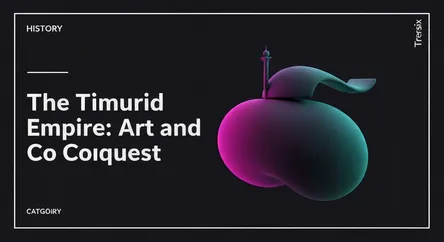History
The Timurid Empire: Art and Conquest

Explore the Timurid Empire, a Turco-Mongol dynasty known for its brutal conquests and the brilliant artistic and scientific Timurid Renaissance.
What is it?
The Timurid Empire was a vast Turco-Mongol empire founded by the conqueror Timur (also known as Tamerlane) in 1370. At its peak, it stretched across modern-day Central Asia, Iran, and Afghanistan, with its magnificent capital in Samarkand. The empire was a unique blend of Turco-Mongol and Persian cultures, establishing Persian as the official language of the court and administration. Although known for the immense brutality of its military campaigns, the empire is also celebrated for fostering a period of extraordinary artistic and scientific achievement known as the Timurid Renaissance, particularly under Timur's successors.
Why is it trending?
Interest in the Timurid Empire is often renewed due to its significant cultural legacy and its connections to later, more widely-known empires. The Timurid Renaissance produced breathtaking Islamic architecture, exquisite manuscript paintings, and major advancements in astronomy and mathematics. This period is seen as a golden age of Islamic art in Central Asia. Furthermore, the founder of the Mughal Empire in India, Babur, was a direct descendant of Timur. This lineage directly links the Timurid legacy to iconic monuments like the Taj Mahal, which draws heavily on Timurid architectural styles.
How does it affect people?
The legacy of the Timurid Empire continues to influence culture and identity today, especially in Central Asia. Architectural marvels in cities like Samarkand and Herat remain major cultural landmarks. The artistic and cultural patronage of the Timurids had a profound impact on the subsequent Ottoman, Safavid, and Mughal empires, shaping art and architecture across a huge swathe of the world for centuries. In modern Uzbekistan, Timur is revered as a national hero, and the Timurid period is central to the nation's cultural heritage. This era's fusion of cultures and its advancements in science and art left an indelible mark on global history.